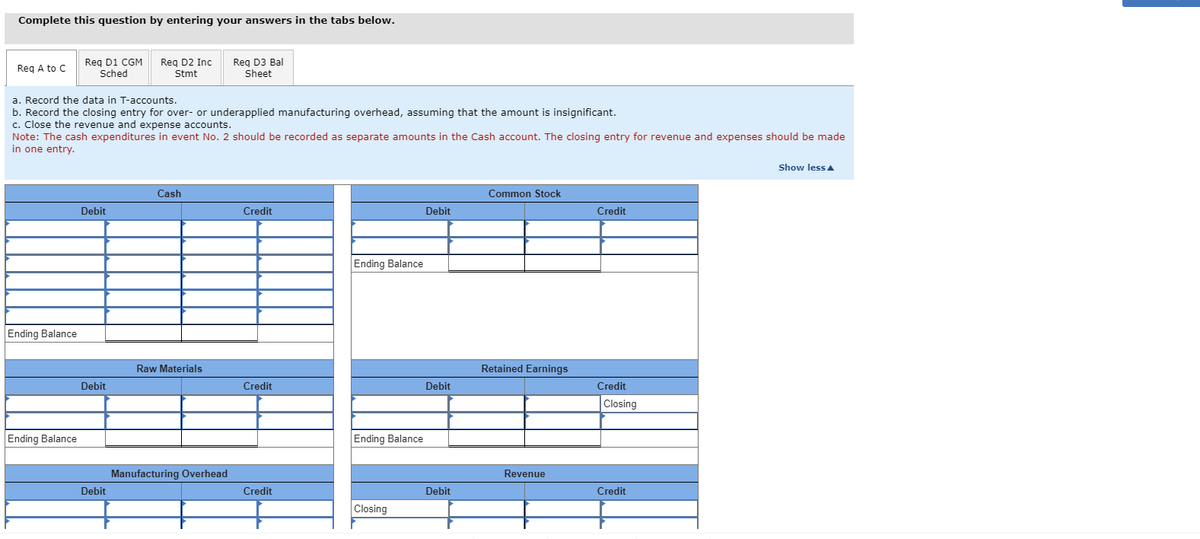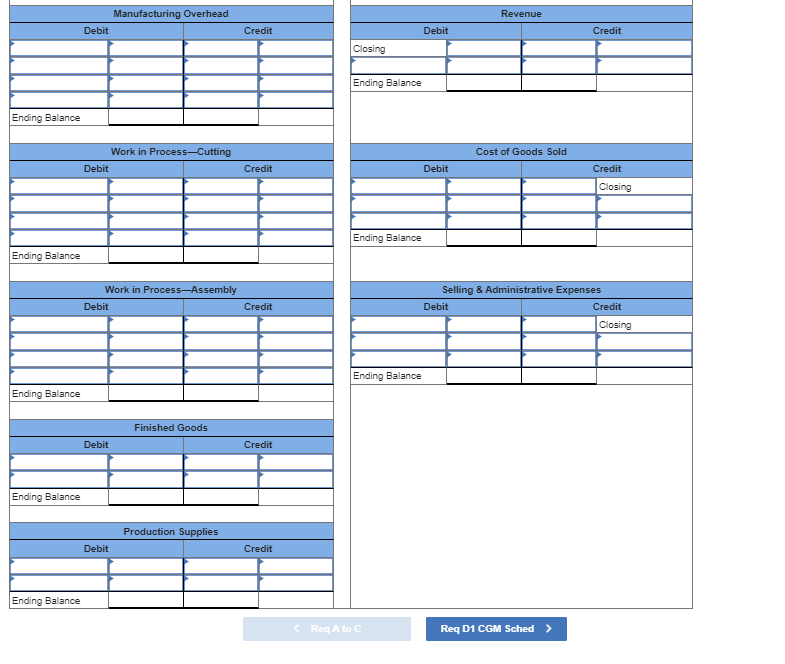Finch Corporation makes rocking chairs. The chairs move through two departments during production. Lumber is cut into chair parts in the cutting department, which transfers the parts to the assembly department for completion. The company sells the unfinished chairs to hobby shops. The following transactions apply to Finch’s operations for its first year, Year 1. (Assume that all transactions are for cash unless otherwise stated.) The company was started when it acquired a $130,000 cash contribution from the owners. The company purchased $34,000 of direct raw materials and $800 of indirect materials. Indirect materials are capitalized in the Production Supplies account. Direct materials totaling $14,000 were issued to the cutting department. Labor cost was $51,600. Direct labor for the cutting and assembly departments was $18,000 and $25,000, respectively. Indirect labor costs were $8,600. The predetermined overhead rate was $0.50 per direct labor dollar in each department. Actual overhead costs other than indirect materials and indirect labor were $13,200 for the year. The cutting department transferred $24,000 of inventory to the assembly department. The assembly department transferred $40,000 of inventory to finished goods. The company sold inventory costing $36,000 for $63,000. Selling and administrative expenses were $6,000. A physical count revealed $300 of production supplies on hand at the end of Year 1. Assume that over- or underapplied overhead is insignificant. Required: Record the data in T-accounts. Record the closing entry for over- or underapplied manufacturing overhead, assuming that the amount is insignificant. Close the revenue and expense accounts. Prepare a schedule of cost of goods manufactured and sold, an income statement, and a balance sheet for Year 1.
Finch Corporation makes rocking chairs. The chairs move through two departments during production. Lumber is cut into chair parts in the cutting department, which transfers the parts to the assembly department for completion. The company sells the unfinished chairs to hobby shops. The following transactions apply to Finch’s operations for its first year, Year 1. (Assume that all transactions are for cash unless otherwise stated.)
- The company was started when it acquired a $130,000 cash contribution from the owners.
- The company purchased $34,000 of direct raw materials and $800 of indirect materials. Indirect materials are capitalized in the Production Supplies account.
- Direct materials totaling $14,000 were issued to the cutting department.
- Labor cost was $51,600. Direct labor for the cutting and assembly departments was $18,000 and $25,000, respectively. Indirect labor costs were $8,600.
- The predetermined
overhead rate was $0.50 per direct labor dollar in each department. - Actual overhead costs other than indirect materials and indirect labor were $13,200 for the year.
- The cutting department transferred $24,000 of inventory to the assembly department.
- The assembly department transferred $40,000 of inventory to finished goods.
- The company sold inventory costing $36,000 for $63,000.
- Selling and administrative expenses were $6,000.
- A physical count revealed $300 of production supplies on hand at the end of Year 1.
- Assume that over- or underapplied overhead is insignificant.
Required:
-
Record the data in T-accounts.
-
Record the closing entry for over- or underapplied manufacturing overhead, assuming that the amount is insignificant.
-
Close the revenue and expense accounts.
-
Prepare a schedule of cost of goods manufactured and sold, an income statement, and a balance sheet for Year 1.


Trending now
This is a popular solution!
Step by step
Solved in 5 steps









